Alaska’s Wilderness
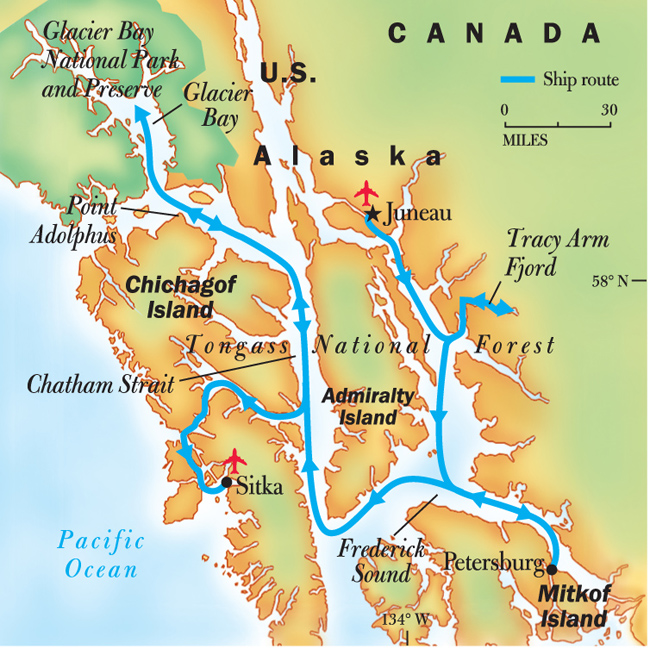
For our spectacular trip-of-a-lifetime this summer we owe special thanks to Steve’s cousin Jay Collins, who devoted two years to planning it. Along with 22 other family members and 41 of Jay and Maxann’s friends, Steve and I read our books, packed our gear, and explored Southeast Alaska on a National Geographic ship that was just the right size. Experienced naturalists took us out in 10-passenger Zodiac boats and informed us about geology, plants and animals. Beauty was all around us, with long summer days and slow-moving sunrises and sunsets. A few days of mist and fog primed us for several days of splendid blue skies. Our respect for the natural world grew every day. The cheerful crew kept us well-fed and very comfortable. Having stretched outward in June to study Our Elegant Universe, we were eager to dive in and learn about Alaska from the bottom of the sea to the top of the mountains.
Steve, Lilli, Violet and I flew to Sitka, our debarkation site, a day before the others arrived. Sitka is a town founded by Russians in 1804 and taken over by Americans in 1867, when the Russians sold all of Alaska for two cents an acre. We visited sites that recalled early prospectors, Tlingit natives and the local seafood industry.
Sitka’s Sheldon Jackson Museum, named for a Presbyterian minister who raised money for schools in Alaska before it became a state, had an interesting collection of artifacts, including this Inupiaq kayak.
That afternoon we were excited to see family members again and meet additional members of the party. Everyone boarded a bus to visit the Alaska Raptor Center,
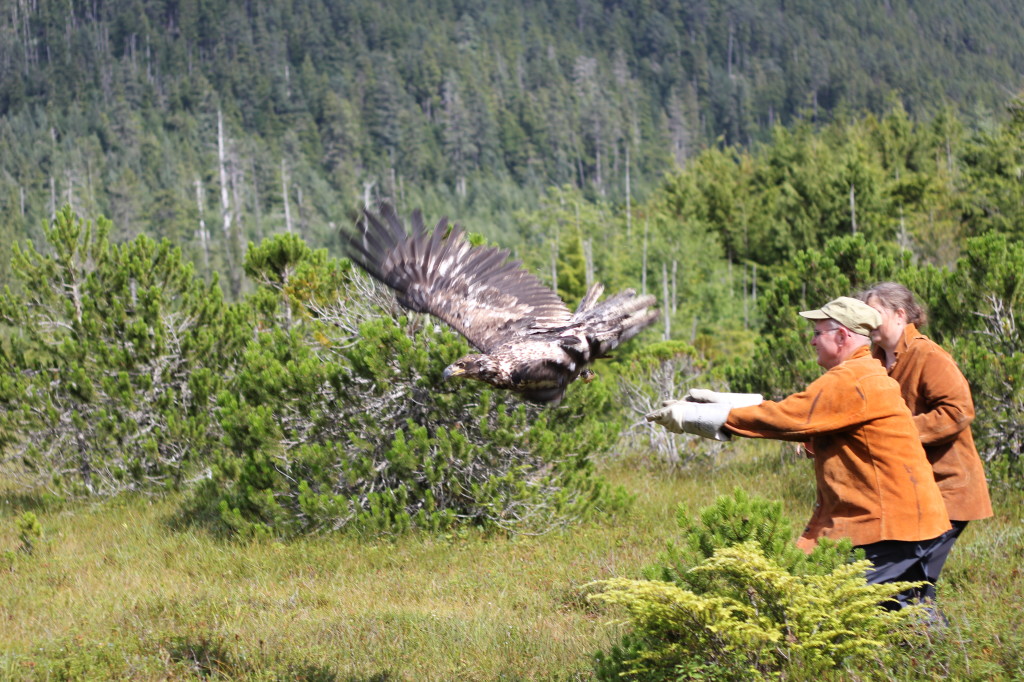
where we saw eagles being released into the wild after rehabilitation, St. Michael’s Cathedral, a historic landmark, and the impressive totem poles in Sitka National Historic Park.
Aboard ship, we met Captain Rick Harris, Expedition Leader Stephanie Martin and five naturalists, a wellness specialist and a full-time videographer. It’s clear they were looking out for our education, health and documentation! Our first day out, I joined a group of hikers interested in the flora and fauna of Lake Eva on Baranof Island. Naturalist Lee Moll helped us identify lichen, Sitka spruce, Devil’s Club, a banana slug eating mushrooms, and with luck, a brown bear and yearling cub catching salmon at a waterfall. There’s a great photo in the PDF of Expedition Reports at the end of this post.
Underlying all this surface excitement were the riches under the sea. Colin McNulty, our Undersea Specialist, displayed a puzzling image on the screens in the lounge Sunday evening. It turned out to be a microscope view of plankton, the basis of the food chain for all marine animals. Seven-year-old Nile was the only one who knew the singular of plankton, “plankter.” We saw thousands of tiny invertebrates swimming around, preparing meals for sea urchin or baleen whales. Colin passed around a sample of sea water that actually tasted quite good. More spectacular were the amazing plants he had photographed on his dive.
Monday morning on a Zodiac ride we saw sea lions up close. I took an afternoon walk with Mike Greenfelder, the photography and bird expert. During the long evening, orca whales surfaced near our ship. Tuesday morning was bright and sunny as we motored north through Glacier Bay National Park and Preserve. Each boat is allowed only limited hours in this pristine wilderness. At 5 am I saw the sun begin to sparkle on snow-covered Mount Fairweather and his brother mountains. William, a Huna Tlingit guide was aboard to teach us about his homeland. After his informative talk we stomped our feet in appreciation, as the Tlingits do. Sarah, a Glacier Bay Park Ranger was also aboard and inducted seven children as Junior Park Rangers. They promised to take care of the earth and PLAY OUTSIDE!
Seals, who have priority in Glacier Bay, had clustered near Johns Hopkins Glacier, rather than spreading out, so we were able to get close and see big chunks fall into the water. Humpback whales arrived to give us a show. In the evening Steve and I heard another Park Ranger give a great talk at the Bartlett Cove Visitor Center. He stressed the urgency of preserving wilderness and reversing climate change. He thought the best way to do so was by nurturing the next generation’s love of nature so that they will be inspired to act.
On Wednesday, another beautiful day, we hiked to a stream where we could see brown bears from about 50 feet away. Busy catching salmon, they ignored us. We were all so quiet–it was like worshipping creation in a cathedral-like setting. Next we cruised by Zodiac to an intricate island/inlet system where we observed bald eagles and eaglets in their king-size-bed-size nests. Before dinner we put on our own hour-long talent show: Maxann, Corby and Bailee sang; Pam, Scott and Ben played piano; Len performed bird calls, Jay and Roger recited poetry, Lilli and Violet led a vigorous toodie-ta-tah dance; and I got to sing the chorus of Alaska the Last Frontier, the theme song for a Discovery Channel series I’ve never watched, but like the music.
The color Blue dominated Thursday–the unmatched color of glacial ice against a gray sky and sea. So glad we found one that we could touch. Though my camera got wet, Mike Greenfelder helped me dry it out in a bag of rice–it worked!
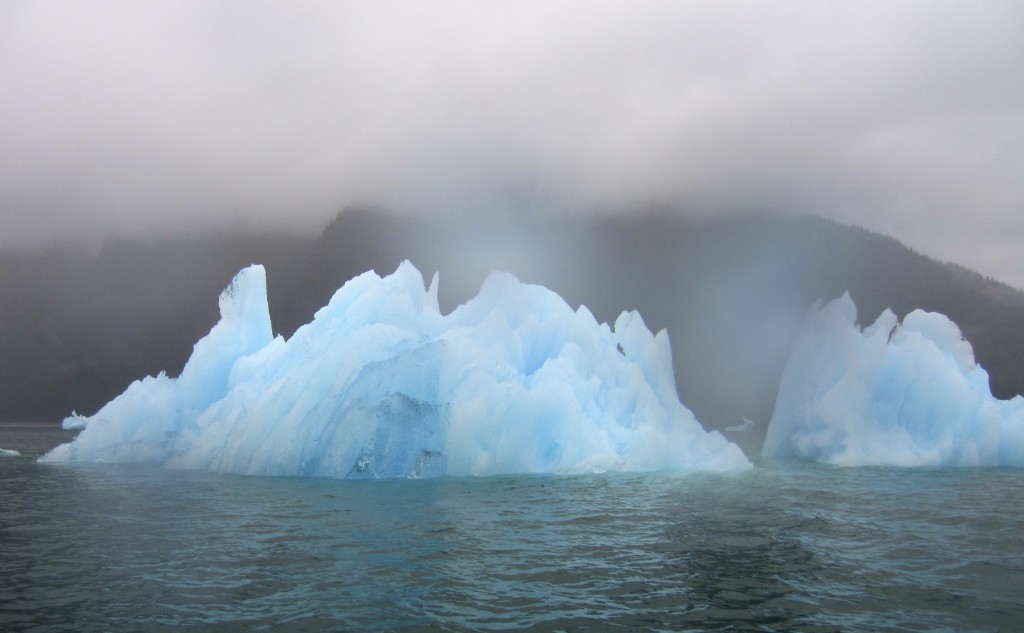

Friday’s gloom lifted when we spotted a mink swim out near our Zodiac, catch a fish and scurry back up the rocks. An afternoon ride to Dawes Glacier was sunnier, but premature. As soon as our Zodiac got back to the ship, the glacier started calving and shooting huge chunks of blue ice into the water, one the size of an 18-wheeler, another the size of a 10-story building. We were at a safe distance, but these “shooters” made the ship rock!
At dinner that night, we drank champagne and wished Happy 13th birthday to Justin and an early happy 70th to Steve (August 22). Such a fabulous time! “When’s the next trip?” several asked. We debarked in Juneau, the state capital, on Saturday morning with time for two more places before our departure flights: the Alaska State Museum and the Mendenhall Glacier. The museum had one of the best story-telling guides I’ve ever met and a comprehensive, well-displayed collection.
Joel had seen the Mendenhall Glacier 30 years ago and was struck by how far it had retreated.
Check out http://extremeicesurvey.org/ for a fascinating time-lapse video of moving glaciers, that was on a constant loop at the Mendenhall Visitor Center.
The National Geographic Naturalists took turns writing wonderful, detailed, illustrated Daily Expedition Reports, which I have compiled here.

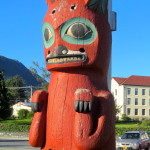
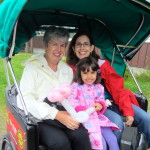
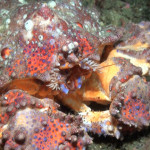
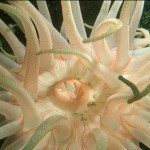
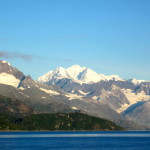
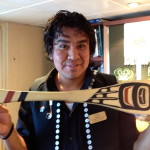
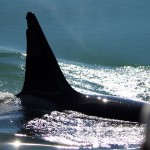
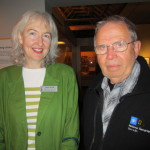
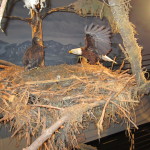
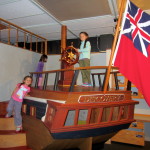
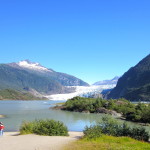
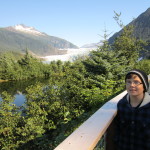
Leave a Reply